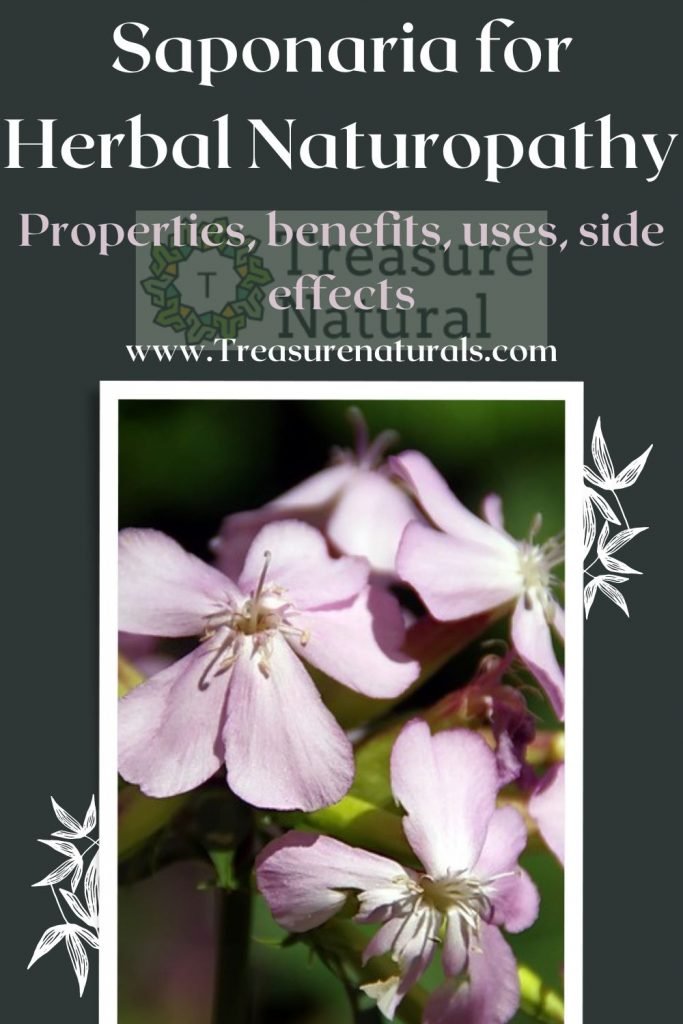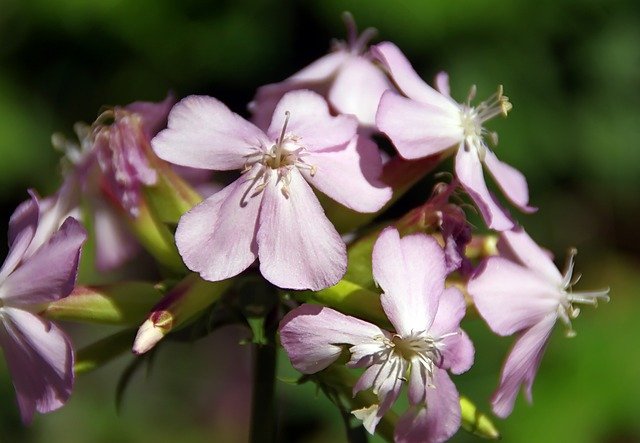
Saponaria was widely used, in the past, for its physical-mechanical properties (to wash tissues – wool in particular) and therapeutic (expectorant, depurative, diuretic, against skin diseases). Let’s find out more.
Properties of Saponaria
The Saponaria officinalis plant has mainly depurative, diuretic, sweating, tonic, expectorant properties. These properties are mainly due to the presence of saponins.
Saponaria can be taken as a decoction to promote bronchial secretion. The saponins it contains are also able to irritate the mucous membrane to promote the elimination of sputum.
These same saponins also have a diuretic and depurative action. There are also products based on saponaria that are used topically to purify the skin.
Saponaria contains the following active ingredients: saponins (saporubinic and saprubrinic acid), quillaic acid, mucilages, sugars, essential oil, glycolic acid, glyceric acid, reducing sugars, galactane gum, essential oil, flavonoids, saponarin, vitexin, saponaretine.
Saponins are contained in all parts of the plant, especially in the roots, which can contain up to 20% of them in the flowering period.
How to use
In phytotherapy, saponaria, the mother tincture obtained from the whole flowering plant is used, in the treatment of acne, psoriasis, herpes, gout, against constipation, rheumatism, as a bronchial expectorant. On the market you can find products that include soap along with other plants such as thyme, primrose or mullein thanks to their expectorant and calming properties.
From the saponaria plant a decoction is obtained that can be used as a strengthening shampoo for brittle and brittle hair or to cleanse delicate skin. With the decoction of saponaria you can also rinse the epidermis affected by acne or psoriasis.
Saponaria bears this name because just like soap in water, it foams thanks to its cleansing properties made by the abundant content in saponins. Saponin is a substance present in the stems, leaves and especially in the roots, thanks to which it exerts its delicate, but deep, cleansing power. Also useful for washing fabrics, soap is used in the production of detergents and laundry soaps.
Contraindications of saponaria
The saponins contained in soap are actually toxic. Its use should therefore be carefully controlled, especially in dosages. Among the side effects of saponaria, we appiamo:
- inflammation of the kidneys,
- blood diarrhea,
- seizures.
Soap extract, on the other hand, can cause irritation of the skin and mucous membranes. Therefore, special care should be taken when using as a shampoo for the risk of severely irritating the eyes.
Description of the plant
Saponaria officinalis is a perennial herbaceous plant, belonging to the Caryophyllaceae family. It has a branched creeping rhizome of reddish brown color.
The stems are erect, hairless, pubescent that do not exceed one meter in height. The leaves are pointed, oval and opposite and have a yellowish color.
The flowers are pink with 5 slightly margined petals, are gathered in terminal panicles, similar to carnations, bloom in clusters during the spring and are numerous, so as to hide almost the leaves. The fruits of saponaria are capsules that contain many brownish seeds.
Habitat of Saponaria
Saponaria is a piata native to Siberia, with a herbaceous habit, which can be easily found in moist soils, near hedges and paths, used mainly in the decoration of rock gardens.
Although they prefer loose and well-drained soils, soap plants easily develop in any type of soil. Widespread throughout continental Europe, in Italy it is very common and is present throughout the territory.
Background

Saponaria has been used for a long time in folk medicine and for washing wool. The name comes from the Latin sapo which means soap, in reference to the saponifying properties of its root.
The first to describe and classify the species was Carl von Linné (Linnaeus), the father of the modern biological and scientific classification of living organisms, as we know it today. Already used as a soap by the Assyrians in the eighth century BC.C., five centuries before Christ there was talk of soap to degrease the wool that the nomadic populations of Asia used to weave their famous carpets.
In the past it was already known by the Romans who used it in thermal baths and by the Arabs who used it against leprosy.
Now it is easy to find soap at the sites of the old wool mills, where in the past it was cultivated and used to wash fabrics.
The root and the dried leaves were used, before the commercial production of soap was started, around the early nineteenth century, as a detergent to wash delicate garments. In fact, by rubbing the plant produces a foam that can be used as soap.






